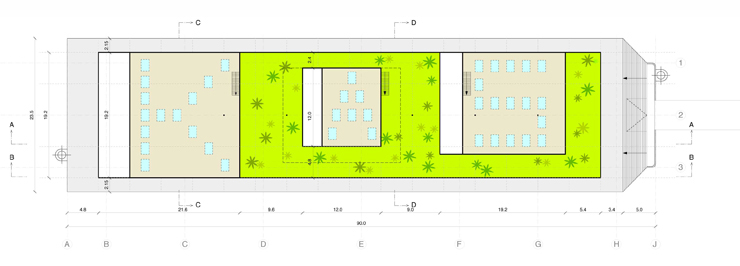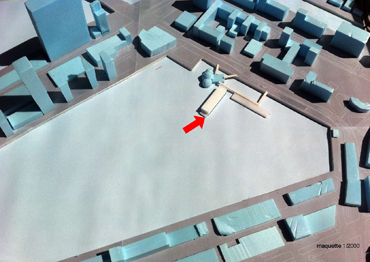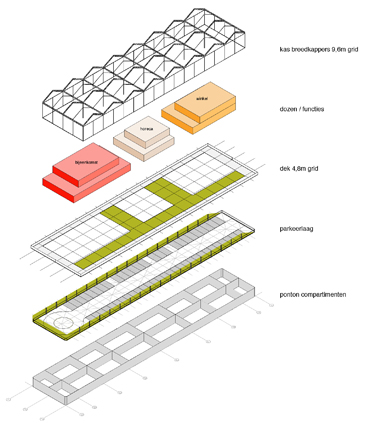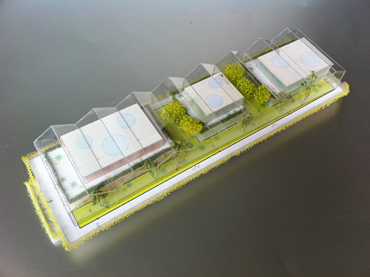morePlatz
architecture / urbanism / art / office / publications / contact deutsch
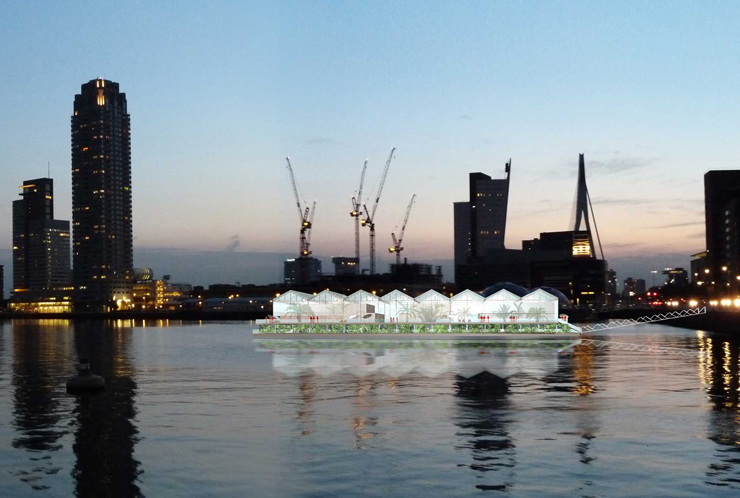
|
|
‘stadskas’ is a project designed for the Rhine-Harbour Area in Rotterdam, the Netherlands. It is a floating greenhouse that aims to connect the city’s population with the water as an urban space. In the framework of the development and ‘colonisation’ of the vast areas of former city-harbours of Rotterdam it has a substantial connection with water and with the future of water-life in this city. The water surface in the Netherlands will increasingly be included in the visions of the development of sustainable cities. The stadskas combines sustainability and urbanity. Living in urban conditions disconnects us from the sources of our nutrition. This project deals with questions of innovative production of our daily consumption of fruit and vegetables and creates a unique water-based setting to experience these. |
|
With its combination of urban farming, conference / exhibition center, food and retail, the floating greenhouse is offering a unique mix of growing vegetables, healthy eating, organic shopping and ‘green’ lifestyle in the midst of the former harbor area. |
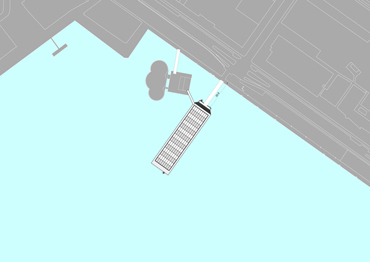 |
|
|
The floating greenhouse is a flexible project that can be moved to other locations in the numerous harbors of Rotterdam. As a case study it could be realized in different cities in Europe or elsewhere in densely populated places by the water. The stadskas also contributes to the opportunities of urban development in the times of rising sea levels. The stadskas is positioned perpendicular to the quai, in order to keep sight-lines from adjacent streets open and for a maximum view to the surrounding skyline. Furthermore it is the optimum position for the stadskas in terms of sunlight orientation. The short elevation is positioned towards the southwest in order to minimize exposure to radiation. The stadskas comprises several layers which are stacked on top of the pontoon: - the pontoon is 16m wide, which makes very suitable for a car parking floor just on top of the basement. The parking function helps financing the project. The parked cars will be surrounded by a facade of plants. - The greenhouse and the programmed boxes are situated on a steel deck. The deck is wider than the greenhouse thus creating a surrounding terrace, which serves as a narrow balcony for visitors and as an escape route. |
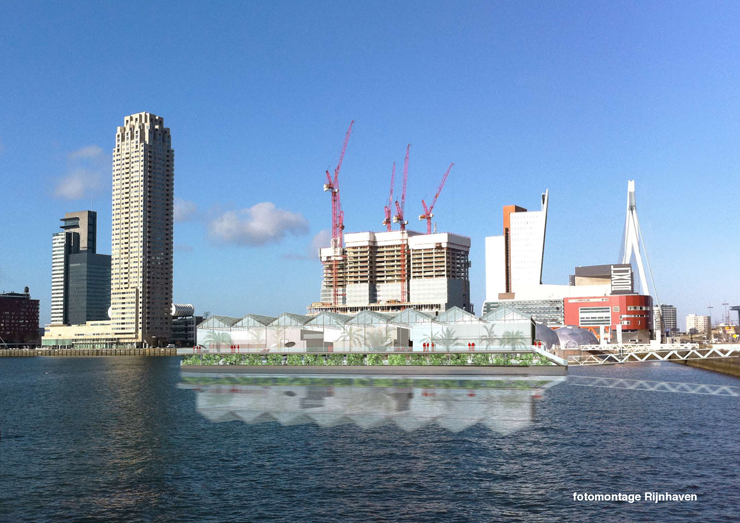

|
- the programmed boxes have a height of 2 stories with a setback to create a terrace for each for the functions. Interior the space can be used for galleries - the greenhouse is based on the standard grid of 9.60m with a line of columns in the middle. There are 8 of these greenhouses, so-called breedkappers, with a depth of 19.20m lined up in a row. The total length of the greenhouse is 76.80m |
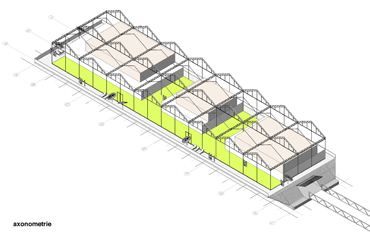 |
|
|
The stadskas is built using the system of ‘foliekas’ which means that the facades are made of an ETFE foil. The South- and West-facades are provided with facade ventilation. A 1/50 scale model of the stadskas was built and presented at the Shell-Ecomarathon in Rotterdam in August 2013. Team credits: |
